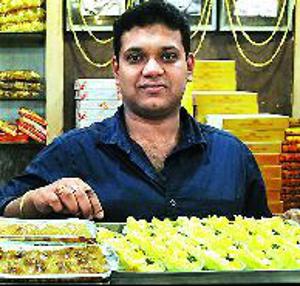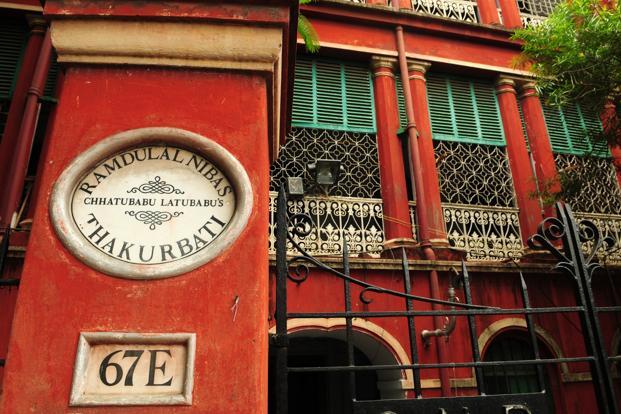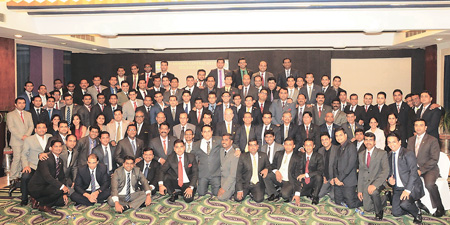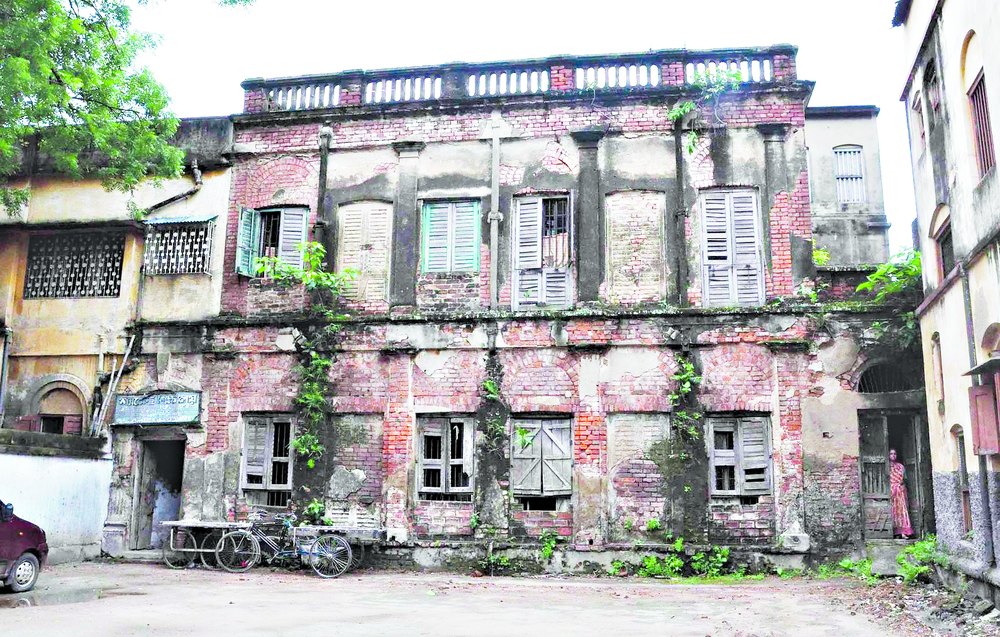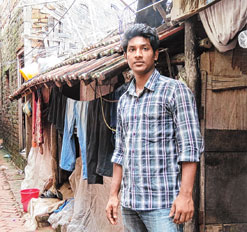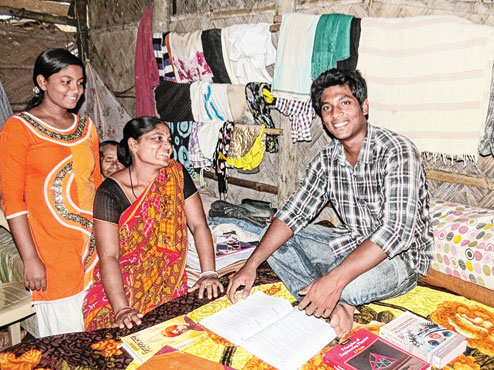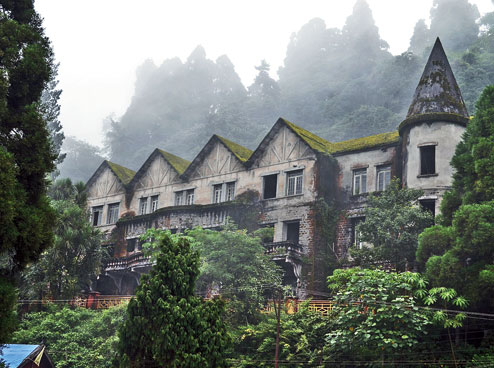Samir Chanda was one of the best production designers in the Bollywood film industry.
Beginning as an assistant to Nitish Roy who would do the production design for many mainstream films along with off-mainstream filmmakers like Shyam Benegal, he turned independent and went on to win a string of awards that included several National Awards for excellence in production design. He made his directorial debut with Ek Nadir Galpo, a full-length feature film in Bengali that was part of the Indian Panorama at the IFFI in Goa and was premiered at the 13th Kolkata Film Festival. Mithun Chakrabarty, who plays the central character, perhaps gives his career-best performance in this film. I interviewed Chanda back in 2007 and find it ironic that he should have missed the theatrical release of this beautiful film in the city last week. He passed away in 2011 of a heart attack. Excerpts:
What inspired you to get into direction in the first place?
It is a kind of knowing oneself, of looking within, of testing oneself with a new measuring rod. As production designer, I had read many scripts, visualised the story, underscored its meaning and translated its concept into reality for the moving image for directors I worked with. Time and again I would wonder, “How would I shoot this scene if I was directing the movie?” “Do I understand cinema?” “Will I be able to narrate a story for celluloid?” For the past few years, a longing to be on the other side of the fence, to share my original thoughts with other technicians and to tell a story in the simplest manner would plague me constantly.
You must have been going through many stories and story ideas. What is it that made you pick this particular story of Sunil Gangopadhyay?
I had read it when I was in college. It stayed with me forever! Whenever I thought of making a film — with other stories around — Ekti Nadir Naam kept coming back. Working with stalwarts of Indian cinema has given me a tremendous sense of aesthetics. I thought my first film should have a sense of strong visual appeal and also be aesthetically strong, a quality my directors transferred on to me. The river, the village, the sky, the people, the ambience of this story gave me the chance to show all that! The manner in which the writer had woven the bureaucracy, religion and the caste system of Bengal with an old man’s struggle to rename a river in memory of his young daughter was riveting. This was a story I was dying to tell, a story of a father who was unlike any other father. A father whose love for his daughter knew no bounds. But who would play the father? My first and last choice was Mithun Chakraborty, a multi-award winning Indian actor, one of the most popular actors of the ‘80s and ‘90s. I felt a miracle happening when he agreed to do the film even before I had completed the script or put the funds together.
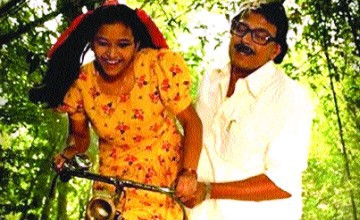
How do you direct? Do you explain the character, scene, shot details and ask your actors to interpret? Or do you actually get down to physically showing them how to enact a given scene? Or, is it a combination of these two?
It was combination of both. With Mithunda and Shweta playing the two main roles, I did not dare to enact any scene. It was more of showing the actors positioning and a rough sketch of the scene. For Mithunda, I had to win him over by giving him a logical explanation of a particular scene and my job was over. With Shweta, my job was to emotionally move her into the character. She is an excellent actress. I genuinely feel I got more than I had expected!
How different was it to direct a senior actor like Nirmal Kumar, an award-winning actor like Mithun Chakravarty, a very young girl like Sweta who has also won the National Award, the little boy, and television actors like Krishnakishore?
I think actors are actors, whether senior or junior, TV or cinema. Unless they are on the same wavelength as you are, they cannot or may not perform well. My job was not to push anybody, but to explain where and how a given scene was placed within the film. Everyone was finely tuned in advance and was on the same wavelength as I was. This made it easier to ensure that I made a really good film. Can you imagine Mithunda doing his homework early in the morning while having his first cup of tea? He came on the sets without making a point. His dedication to his work after all these years is amazing.
Did you have a complete written script before you began to shoot the film? Or did the script get written while shooting was on?
Yes, I had a bound script with me. On location, I deleted some dialogues and changed the pattern of the scene sometimes. I focused on the father-daughter relationship and in the end, where the District Magistrate steps in to help. It was the human side of the Magistrate that helped this old man and not the official persona. I built the first half of the film because I needed to grow a plant, which holds a flower to blossom. Some evildoers came and trampled on this flower and destroyed it forever. The pain you then experience is something different. I wanted my audience to enjoy the presence of Anu and miss her too in the latter half! The location, the crowds, the situation, made me change a bit from the original in places — but without compromising on the content of the scene.
Your film is shot mostly on location. What pitfalls and obstacles did you face?
The film was shot on location in Burdwan district at a place call Naliapur, on the banks of the Bhagirathi river. The main pitfall was of accommodation; there was no hotel nearby, so we had to accommodate technicians in villagers’ houses, sharing one or two rooms in every house. Hot water had to be organised every morning as it was pretty cold. My unit was a big mix of different cultures. I had Tamilians, Maharashtrians, Oriyas and Bengalis. Mithunda, Shweta and the camera team were living on the first floor of a big house in a neighbouring village 60 km from the location. But nothing could come in the way of our collective motto of making a good film. My art department had created a market square, a bus stand and so on. The houses were altered according to the needs of the film and the morgue was built in a real health centre. We got so involved with the local people that the villagers were crying when we packed up.
As a production designer, pick a few films that you deem to be your career bests.
Mani Ratnam’s Iruvar, Shyam Benegal’s Sardari Begum, Ketan Mehta’s Sardar, Rakeysh Om Prakash Mehra’s Aks and Rang De Bassanti. As a production designer, it is only one department you are handling, such as creating the right atmosphere, right ambience, etc. Direction means handling every department to see that the final result is just the way you wanted it. You must have patience to achieve this goal.
source: http://www.thestatesman.com / The Statesman / Home> Marquee / by Shoma A. Chatterji / August 22nd, 2015
